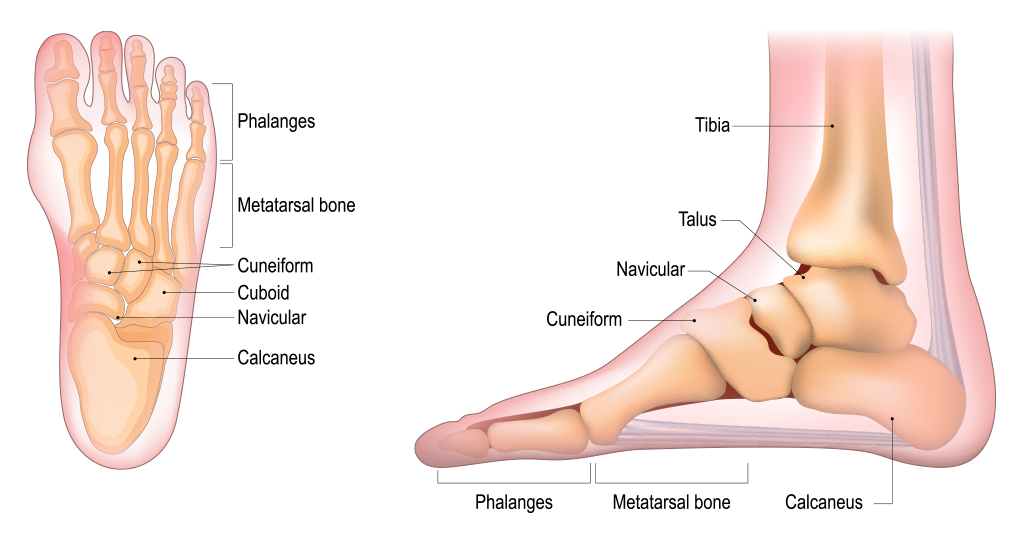A Bunion is a protrusion of bone or tissue around a toe joint. Most often, these develop at the MTP joint, and less commonly in the little toe.
The bones of the toe become misaligned and over time, the normal structure of the bone changes – growing into the Bunion ‘bump’ on the edge of the foot, where the joint protrudes outward of the side of the foot and causes abnormal biomechanics.
A Bunion at the MTP causes the big toe to angle in toward the second toe and in severe cases, it may tuck under or overlap the second toe.
Bunions are an advancing condition, beginning with misalignment, worsening with age and eventually causing pain and deformity. They are more common in women than in men.
Because foot biomechanics are altered, Bunions can lead to damage in other parts of the foot such as Bursitis where the fluid in the joint becomes inflamed, or Arthritis which is degrading cartilage.
As well as the common Bunion, other types include:
Occurring in younger people between 10 to 15 years old, most commonly in girls. Less restrictive on movement of the big toe compared with adult Bunions, this condition can be painful and make it uncomfortable to wear shoes.
This is the less common Bunion located at the base of the little toe. It affects the joint in the same way as the MTP, but on the outer edge of the foot.
In the majority, Bunions are an inherited condition thought to be related to muscle imbalance in the foot. Inappropriate footwear can exacerbate the biomechanical problems, but is not usually the primary cause.
Bunions may be caused by inflammatory conditions like Rheumatoid Arthritis, or a neuromuscular condition like Polio.
Bunions can also be a result of Arthritis in the affected joint.
Signs of a Bunion include:
The time to seek treatment is when there is pain or difficulty finding comfortable footwear.
The foot has 26 bones connected with joints, muscles, ligaments, and tendons.
At the big toe, there are two joints. The largest is the metatarsophalangeal joint (MTP) where the phalanx (first big toe bone) connects with the metatarsal (foot bone).
The foot is one of the body’s most complex parts and carries its entire weight, it is, therefore, susceptible to many stresses which can cause much disruption.

If you are looking to book an appointment, please call us on